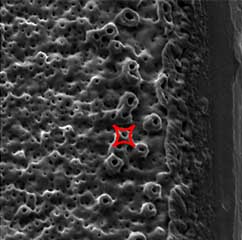Anodization as a promising surface treatment for drug delivery implants and a non-cytotoxic process for surface alteration: a pilot study.

All claims expressed in this article are solely those of the authors and do not necessarily represent those of their affiliated organizations, or those of the publisher, the editors and the reviewers. Any product that may be evaluated in this article or claim that may be made by its manufacturer is not guaranteed or endorsed by the publisher.
Aim Surface treatments use industrial processes in which surface contamination can occur. In this context, this study aimed to demonstrate a surface treatment process, from laboratory samples and clinical implants, named anodizing, analyze their tendencies to surface contamination as well as their properties.
Materials and Methods Laboratorial samples of pure titanium were anodized. Investigated by scanning microscopy (SEM), dispersive energy spectroscopy (EDS) and wettability tests. Four implant systems available in the current market were chosen by different surface treatments (anodizing, double acid etching and particle blasting) and investigated by SEM/EDS.
Results Laboratory samples showed a nanomorphology surface, free of contaminants and good liquid/surface interaction. The implant system with anodization treatment did not present elements outside the standards. However, the implants treated with acid attack and blasting were found different chemical elements like aluminum and magnesium.
Conclusions Anodizing proved to be a contaminant-free surface treatment both in the laboratory and clinical implants. In addition, its promising property of owning TiO2 nanotubes suggests an inherent evolution to biomedical implants for drug delivery systems other than all surface treatments developed to date.
The Journal of Osseointegration has chosen to apply the Creative Commons Attribution NonCommercial 4.0 International License (CC BY-NC 4.0) to all manuscripts to be published.


 https://doi.org/10.23805/JO.2020.12.01.01
https://doi.org/10.23805/JO.2020.12.01.01







